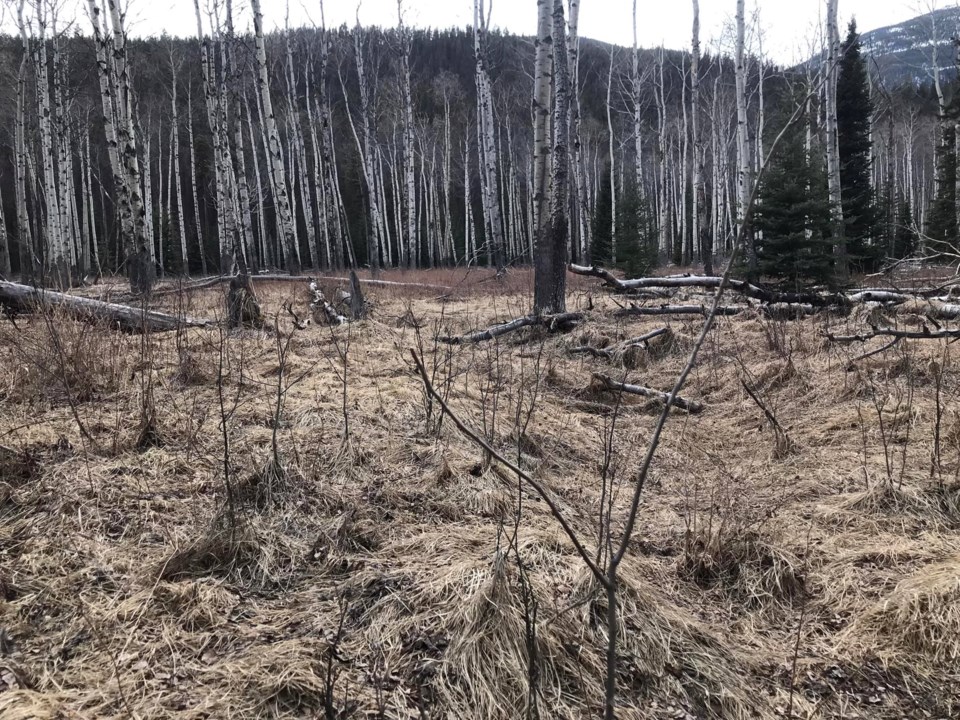The news out of Jasper is tragic and my thoughts go to everyone who has had their lives upended, businesses destroyed, and homes burnt down. What a loss for one of our small town gems.
We witnessed the stress and anxiety first-hand. We had some evacuated friends stay with us. Luckily their home on the east side of town was spared, but some of their friends and family weren’t so lucky.
Predictably, the disaster has now turned into a political blame game. Which is fine, I guess. We need to get to the bottom of what failed.
So I may as well jump in on the action and blame something no one else will - the elk. At least partially. Yes there should be more controlled burns happening, as Indigenous nations once routinely practiced before being evicted from the park. And more of those dead pine should have been selectively logged like Freya Logging did on the north side of the Jasper townsite back in 2019.
But we also need to eradicate the elk herds, which never existed in Jasper in large numbers until 1920, when park authorities shipped in 88 elk from Yellowstone.
Like in Yellowstone, elk have had a massive impact on the most fire-resistant forest type we have - the aspen.
A couple years ago we hiked on the trails directly around the Jasper townsite, and since I live with permanent “aspen goggles” strapped to my face, I looked at the health of the aspen. It was not good. Everywhere I looked, chewed-off aspen saplings were evident.
Just south of town I investigated a couple of pure aspen stands. Same deal. The young aspen were not getting past browse height. There were almost no young aspen to replace the sick and dying elderly. It wasn’t just elk hammering the aspen, but moose too. The highly flammable conifer, which the elk and moose avoid eating, were gradually replacing the fire-resistant aspen. You see the same thing around Banff.
I went into the parks office and showed them the pictures I took. They looked at me with blank stares, and that’s maybe because they were summer students and aspen conservation isn’t taught in Canada. To the contrary, we teach our youth that aspen is a weed of no value, unlike the United States, where ungulate destruction of aspen forests, like the famous Pando in Utah, is a well-recognized problem.
There is a chance those blank stares were because they had heard it all before.
Within a couple of decades of their introduction in 1920, the elk population had exploded. “The reproduction of aspen and other favourite elk foods ground to a halt,” writes Mark Bradley. So the elk were hunted. Between 1943 and 1969, 2,655 elk were culled to help the aspen. Wolves also chipped away at the numbers.
So maybe the elk overpopulation/aspen decline issue was old news. But it sure didn’t look like that around town, where it matters most for us.
It will probably only get worse.
As the aspen attempt their comeback around Jasper, the resident plague of introduced elk, whose survival everyone is busy celebrating, will likely expand and stop the deciduous rebirth in its tracks. Soon we will be right back to where we started: a forest of tinderbox conifer waiting for the next wave of drought, heat, and dry lighting.
It’s a high price to pay to satisfy the facade of animal welfare. Moving forward, we need to recognize the elk aren’t precious, nor do they represent a natural park. They are in fact a threat to not just fire resistance but biodiversity. They need to be either hunted again or possibly excluded in key areas with fencing. It’s not an easy sell. I know my Jasper friends enjoy seeing the goofy elk around town. I would too. But habitat is paramount, and the aspen must be given free rein to diversify the hills, provide more fire-resistance, and return the natural balance once more.
James Steidle is a Prince George writer.



